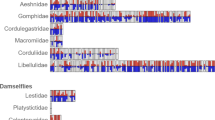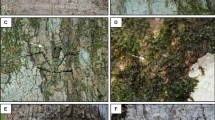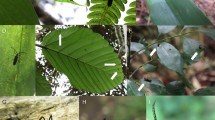Abstract
THE part played by living insects in adopting attitudes which increase the effect of the colour and pattern is often overlooked in discussing the relation of coloration of insects to natural selection. Mr. J. J. S. Cornes has given a striking new example from New Zealand of a phenomenon recorded by by Mr. A. H. Hamm1, for English moths when resting on the bark of trees. It was recorded that the vast majority of the individuals of the common winter moth, Hybernia leucophearia, rest with the body horizontal, so that the lines of pattern on the wings are brought into parallelism with the dark shadows in the abundant vertical cracks of the bark on which they rest. If the wings were spread horizontally, as is so often the case with moths of this group, the main lines of the pattern would cut across the main lines of the background.
This is a preview of subscription content, access via your institution
Access options
Subscribe to this journal
Receive 51 print issues and online access
$199.00 per year
only $3.90 per issue
Buy this article
- Purchase on SpringerLink
- Instant access to full article PDF
Prices may be subject to local taxes which are calculated during checkout
Similar content being viewed by others
References
Proc. Ent. Soc. Lond., p. xv (March 19, 1902).
Trans. Ent. Soc. Lond., 483–85, Plate xxix (1906).
Longstaff, G. B., “Butterfly Hunting in Many Lands” (London, 1912), p. 194 and frontispiece.
Author information
Authors and Affiliations
Rights and permissions
About this article
Cite this article
CARPENTER, G. Attitude and Concealing Coloration. Nature 140, 684 (1937). https://doi.org/10.1038/140684b0
Issue date:
DOI: https://doi.org/10.1038/140684b0



